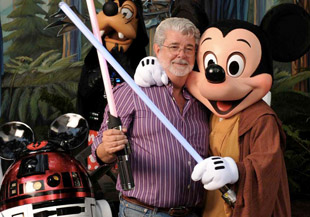|
|
Top 12 Film Industry Stories of 2012: #1The Force Is with DisneyBy David MumpowerJanuary 9, 2013
In the merchandising world, there is one heavyweight that lords above all others. Disney has mastered the art of selling toys to children. In 2011 alone, Disney sold $37.5 billion worth of retail licensed products. The next closest global competitor managed “only” $12 billion. Yes, Disney has tripled its nearest competitor. Even the vaunted toy distributor, Mattel, grossed a modest $7 billion in sales in 2011, over $30 billion short of Disney in the same calendar year. Mickey Mouse has lapped the competition in every conceivable way. The problem with possessing a de facto monopoly on global sales is finding new avenues for growth. In August of 2009, Disney attempted to correct a longstanding flaw in their internal economy. Disney toy sales have historically skewed to girls because of iconic princess characters in their film library. Disney Princesses are the top merchandising items in the world, after all. In the 2000s, the company has actively sought to create more of a toy sales balance between girls and boys. The corporation accidentally stumbled into a solution for this when they purchased Pixar Animation Studios in 2006. The price tag was a respectable $7.4 billion. No one questioned the value of this proposition since Pixar was the gold standard in family fare at the time. A few months later, Cars was released into theaters and by the end of the year, Lightning McQueen and Mater had become two of the hottest toys on the market. Boys loved Cars merchandise to the point that an argument could be made that Disney has broken even on its $7.4 billion Pixar purchase through Cars toys alone.
[ View other Top 12 Movie Industry Stories of 2012 ]
[ View other BOP Lists ]
[ View columns by David Mumpower ] [ Email this column ]
|

|
|
|

|
Thursday, April 25, 2024
© 2024 Box Office Prophets, a division of One Of Us, Inc.


